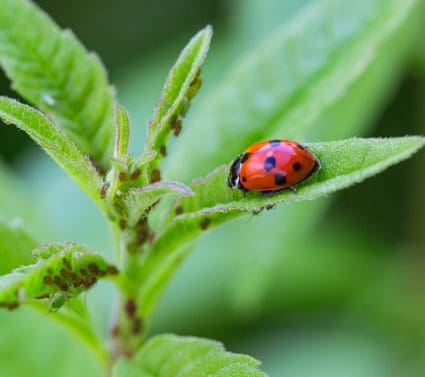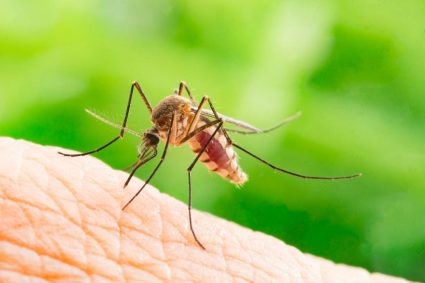
Frogs, these fascinating creatures, are found worldwide, and their presence in an ecosystem often indicates its health. While they might not be the first creatures that come to mind when you think of pets, they are increasingly becoming popular for their unique behaviors and minimal care requirements. But have you ever wondered about the more ‘earthy’ aspects of a frog’s life, such as their droppings?
Knowing what frog droppings look like can be helpful for a variety of reasons, from identifying a potential frog habitat to understanding their diet and health. In this comprehensive guide, we’ll delve into the world of frog droppings, answering all your questions and more.
Frog droppings generally appear as small, elongated or tubular formations that resemble miniature logs. They are typically brown or greenish in color and moist but formed. The size can range from a few millimeters to a couple of inches, depending on the frog’s size and species. The droppings often contain visible bits of insect exoskeletons, reflecting the frog’s diet.
General Appearance of Frog Droppings
Frog droppings can vary in appearance based on factors such as the frog’s diet, size, and species. Generally, frog poop is brown or greenish in color, moist but formed, and elongated or tubular in shape, resembling miniature logs. The size of the droppings can range from a few millimeters for smaller species like the American green tree frog to a couple of inches for larger species like the African bullfrog. Fresh frog poop is usually dark brown or black, firm, and shiny, but it often shrinks and loses its shine once it dries. The texture of the droppings is typically moist due to the high water content of amphibian waste.
How Diet Influences Frog Droppings
The diet of a frog significantly influences the appearance of its droppings. Frogs are primarily insectivores, consuming insects, worms, and other small creatures. Larger species may consume small fish and even rodents. The feces of frogs eating a lot of hard-shelled insects may contain noticeable bits of exoskeletons. Frog poop is generally brown or black, cylindrical in shape, and shiny when fresh. The color and texture of the droppings can change due to dietary adjustments and hydration levels. For instance, a change in diet can result in a reddish hue in the feces.
Identifiable Features in Frog Droppings
Frog droppings have specific characteristics that distinguish them from other animals’ droppings. They are often brown and cylindrical in shape, and can be quite large compared to the frog’s body size, sometimes being one-fourth the size of the frog. The droppings can be moist or wet when fresh and become dry over time.
Frog feces differ from bird droppings, which usually consist of a dark, solid portion and a white, liquid portion (uric acid). Mammal feces, on the other hand, are typically more rounded or clumpy and usually much drier compared to frog feces. Snake droppings tend to be slimy, while rat droppings are more cylindrical and smoother than frog droppings.
The Role of Age, Size, and Species
The age, size, and species of a frog can affect the appearance of its droppings, with variations in size, shape, and color depending on these factors. Generally, frog droppings are elongated, tapered, and dark brown or black in color. The size and shape of the droppings can vary depending on the species and diet of the frog. For example, larger cockroach species produce bigger and more rigid pellets than mouse droppings. The frequency of defecation can also be influenced by the frog’s age, with younger frogs typically pooping more often than older ones.
Ecological Benefits of Frog Droppings
Frog droppings play a significant role in nutrient recycling, energy transfer within ecosystems, and maintaining ecosystem health and equilibrium. They also provide valuable information for researchers studying the health of frog populations and their surrounding environments. Frog feces can contain various parasites, which provide clues to the animal’s health and the health of the surrounding environment. Identifying the presence of parasites in frog feces can be crucial for conservation efforts and ecological studies.
Potential Health Hazards
Although frog poop is not directly harmful, it might contain hazardous bacteria and parasites that may affect humans if they come into contact with them. One of the disease-causing bacteria found in frog poop is Salmonella, which is responsible for food poisoning. Salmonellosis can cause severe flu-like symptoms, such as vomiting, diarrhea, and fever. Another potential hazard is the transmission of pinworms, which can occur if a pinworm comes into contact with a person’s mouth, nose, or eyes.
Safe Handling and Disposal of Frog Droppings
To safely handle or dispose of frog droppings, follow these guidelines:
- Wear personal protective equipment: Use gloves, eye protection, and masks when handling frog poop to minimize the risk of infection.
- Use a tool or disposable material: Use a disposable towel, rag, or a tool like a small shovel to pick up the droppings without directly touching them.
- Dispose of the droppings properly: You can dispose of frog feces by pouring sand on top and disposing of it in a bin or inside a bush, ensuring that your body does not come into contact with the feces.
- Clean the area: After removing the droppings, disinfect any equipment or surfaces that came into contact with the waste. Use a solution of bleach and water to kill any pathogens.
- Wash your hands: Always wash your hands with soapy water after handling frog poop or any materials that came into contact with it. Scrub your hands for at least 20 seconds to ensure proper hygiene.
Common Places to Find Frog Droppings
Common places to find frog droppings include near bodies of water, damp areas with vegetation, in aquariums, window sills, and door edges, and well-lit areas during nighttime.
Remember that frog droppings can contain harmful bacteria, parasites, or pathogens, so exercise caution when handling them.
In conclusion, understanding what frog droppings look like can provide you with a lot of valuable information, whether you’re a frog enthusiast, a pet owner, or simply someone who’s curious about these fascinating creatures. This comprehensive guide has hopefully shed some light on this often-overlooked aspect of a frog’s life.
Frequently Asked Questions
How often do frogs defecate?
The frequency of defecation in frogs can vary greatly depending on their age, size, species, and diet. However, on average, a healthy frog will usually defecate once every 1-2 days.
How can I tell if my frog is constipated or has diarrhea?
Normal frog droppings should be moist but well-formed. If your frog’s droppings are too hard and dry, it might be constipated. On the other hand, if the droppings are too loose or watery, your frog could have diarrhea. Both conditions may require a visit to a vet.
What should I do if I notice changes in my frog’s droppings?
If you notice any significant changes in your frog’s droppings, such as changes in color, texture, size, or frequency, it could be a sign of a health issue. It’s recommended to consult with a vet who specializes in amphibians.
Can frog droppings harm other pets?
While frog droppings might contain bacteria and parasites, they are not typically harmful to other pets. However, it’s always a good idea to keep your pets’ environments clean and separate to prevent any potential cross-contamination.
Can I use frog droppings as fertilizer for my plants?
Yes, frog droppings can be used as a natural fertilizer for plants. They are rich in nutrients and can help improve the soil’s fertility. However, make sure to compost them first to kill any potential pathogens.










